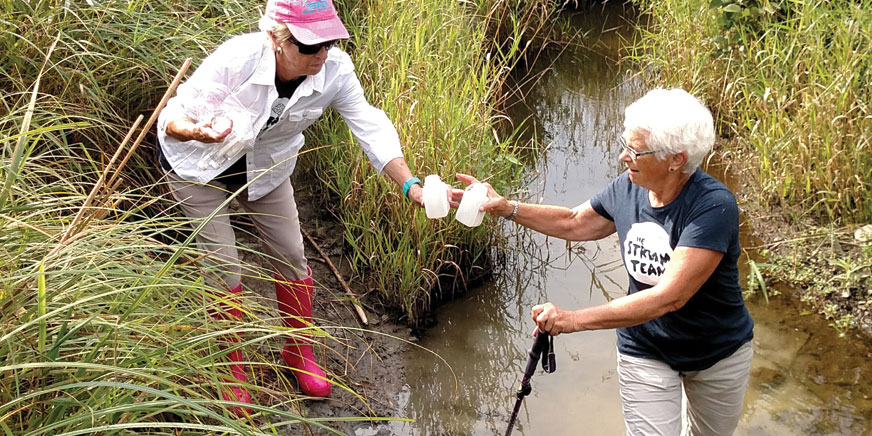Explore the Lake Champlain Basin
Stream Monitoring
Stream monitoring is an important component of stormwater mitigation. Each year, volunteers are needed to take water samples from various local streams. These samples are sent to a lab and analyzed.

What do we monitor for?
Sodium Chloride
Chloride is a component of salt found naturally in minerals and the ocean. Elevated chloride levels in surface waters can lead to poor health and reduced reproduction in aquatic species, according to the Vermont Surface Water Management Strategy. The sources of chloride in water include road deicing salts, wastewater from industries and municipalities, and leachate from landfills.
Phosphorus
Phosphorus is an essential nutrient for plants and animals in the aquatic food web and is naturally limited in most fresh waters. Even a modest increase can set off a chain of undesirable events. Such events include algae blooms, accelerated plant growth, low dissolved oxygen, and death of aquatic animals. Phosphorus naturally occurs in soils and rocks. Additional phosphorus enters waterways through runoff from wastewater treatment, plants, fertilized lawns, and cropland, failing septic systems, animal manure storage areas, pet waste, and erosion.
Why do we monitor?
Consistent data related to water quality and quantity allow stormwater managers to better assess the condition of our waters and develop solutions that will have a lasting positive effect. Volunteers are typically used to collect samples at a variety of locations along a stream or within a watershed. On occasion, volunteers may also gather visual data detailing the condition of a stream. Data collected in this way may include presence or absence of riparian buffers, streambank stability, and presence of litter or trash.
